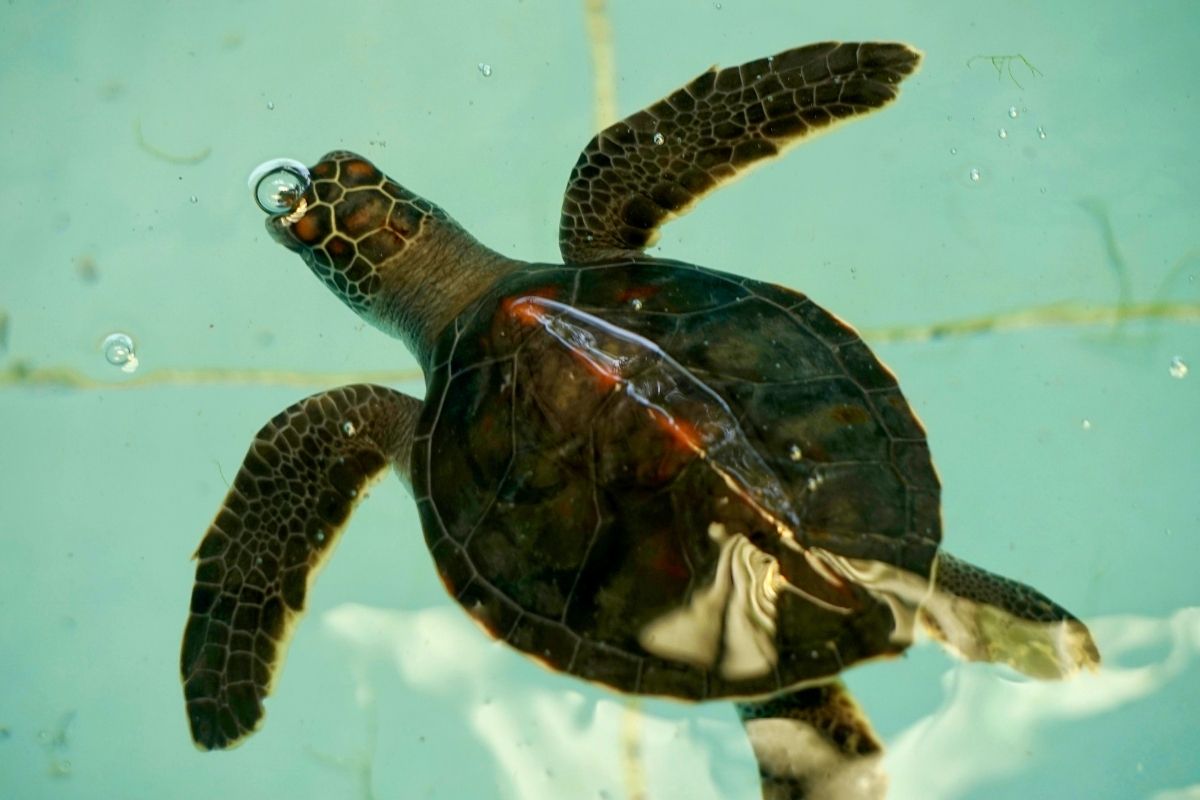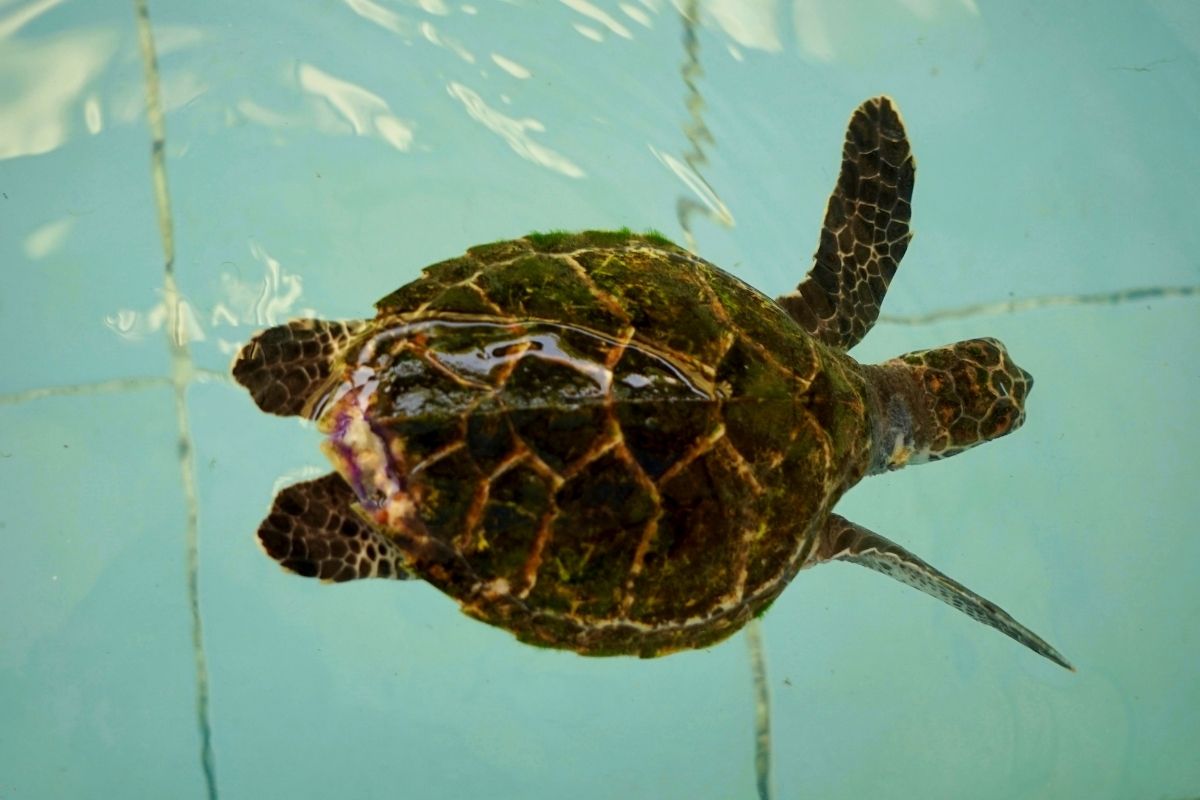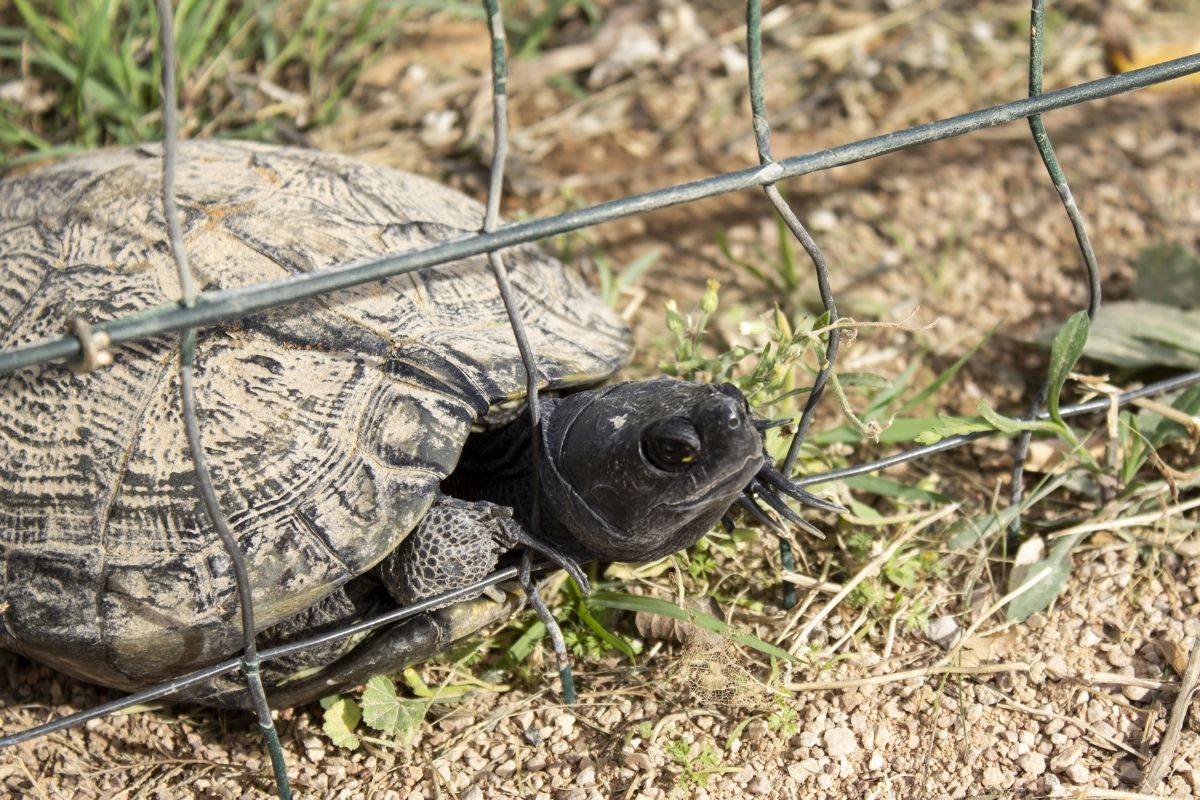Turtles are known for their ability to live in extreme conditions. They can survive underwater for months at a time, and they even thrive in hot temperatures.
However, if you’re new to owning a turtle or are simply curious, you might be wondering: Do turtles feel pain?

In this article, I will cover whether turtles feel pain and some key signs of pain to watch out for in turtles.
Let’s get into it.
Do Turtles Feel Pain?
Yes, turtles very much feel pain. In the same way that people do, turtles have pain receptors.
These receptors send signals to the brain that tell them when something hurts.
The brain then interprets this message where the sensation of the pain is registered, the information is processed, and then is finally perceived by the turtle.
When Do Turtles Experience Pain?
Turtles experience when physically hurt or injured, and this can occur in a variety of different circumstances.
For instance, a turtle will likely feel pain if its shell has received a crack in its structure.
Another circumstance your turtle might experience pain is when it receives an injection or a shot from a check-up at the veterinarian’s.
In addition to this, they will likely feel pain if you are treating them for shell rot, as this can make their shell very sensitive.
As you can see, turtles can experience pain in a variety of different circumstances just like we humans can!
Turtle Shells And Pain

Many people believe that a turtle’s shell is similar to a house. In reality, a turtle’s shell is an extension of its ribcage and is a vital part of the turtle’s skeleton.
So, can a turtle feel through their shell? Of course a turtle can!
This might surprise you considering how hard their shells feel, but it’s important to note that if a turtle can feel their shell being touched, scratched, or tapped, they can definitely feel pain due to the nerves in their shells.
So, while turtle might use their shell as a refuge to protect themselves from predators, it is very much a part of their body. As a result, they can feel pain through it!
That being said, it’s important to note that not all parts of a turtle’s body are as sensitive as other parts.
In the same way that touching your nails and touching your head are different sensations, different parts of a turtle’s body are more sensitive than others.
Do Turtles Cry When They Experience Pain?
No, turtles don’t cry like humans do when they experience pain.
While they very much feel pain like you and I do as humans, you won’t be able to visibly see them crying in pain.
That being said, turtles have the ability to cry for a different reason.
Namely, turtles cry to remove excess salt from their bodies due to the large proportions of time that they spend in the water. As a result, turtles have glands in order to help them remove salt from their eyes.
So, while it might look like a turtle is crying in pain, it’s really just removing the salt from their eyes!
Signs That A Turtle Is In Pain

As a turtle owner, you want to ensure that you are able to spot the signs that a turtle is in pain.
Some of the signs that a turtle is in pain include but are not limited to:
Loss Of Appetite
If your turtle isn’t eating or is eating much less than it usually would, then this could be a sign that they are in pain.
Immobility
If your turtle is in acute pain, then it will struggle to move from one place to another.
If you begin to notice that your turtle is less active or is still in a particular place for longer periods of time, then this could indicate that they are in pain.
Behavioral Differences
When your turtle is in pain, there are a variety of behavioral differences that you can keep an eye out for.
For instance, you might notice that your turtle is significantly less active than normal, or perhaps they aren’t basking for long periods of time.
While this might not be something to worry about, changes in behavior can be significant.
This is why it’s essential to stay in tune with your turtle and their normal behaviors to ensure that you are able to spot when there is a problem and so that you can relay this information back to their vet.
Body Imbalance
Last, but by no means least, if your turtle is in pain you might notice that its posture is different. Perhaps they’re not able to move as freely as they normally do to accommodate for an injury, or maybe they’re leaning to one side.
If you notice these signs, it is important that you get your turtle checked out to find out the cause of the problem.
Your turtle’s health should always be your priority, and waiting isn’t worth the risk.
If you suspect that your turtle is in pain, you will need to ensure that they are checked out to rule out anything more sinister and to get them the treatment that they require.
Would A Turtle Feel Pain If The Shell Was Injured Or Removed?
Yes, a turtle would be in pain if its shell was injured or removed.
As I’ve mentioned briefly above, the turtle’s shell isn’t a home that they live in. Their shell is a part of their skeleton and contains nerves that mean your turtle can feel through their shell, from the slightest stroke to being damaged.
If you can’t perceive how this would affect your turtle, imagine that you fall and break your arm.
In the same way that you would feel immense pain for a broken bone, your turtle would experience a very similar pain if its shell was injured or removed.
Just because a turtle isn’t able to outwardly show emotions as a human can, the signs above will indicate their pain.
In addition to this, even if they aren’t showing signs of pain yet, you can bet that if the animal has got damage to its shell, it will be incredibly sensitive to the touch.
Bearing this in mind, you will need to make sure that you get your turtle’s shell checked out at the vet and get them the necessary care.
You will also need to take extra care when handling them, as damage like this can take a significant period of time to heal properly.
Can You Harm A Turtle By Painting Its Shell?
Yes, painting a turtle’s shell will harm your pet.
Some paint is so potent that you need protective masks just to be able to work with it, so imagine what this can do to your unsuspecting turtle.
The paint contains an array of toxic chemicals that can be absorbed through the turtle’s shell into their bloodstream. At best this can be significantly harmful to your pet’s health, and at worst can even be fatal to your pet turtle.
In addition to the fact that paint is harmful, turtles need to absorb sunlight in order to receive enough vitamin D to help them grow.
If you paint and cover their shell, then they won’t be able to absorb the necessary UV light for their benefit.
If a turtle doesn’t receive enough vitamin D, then it can experience a wealth of health issues. A vitamin D deficiency can result in metabolic bone disease, which can kill them if you’re not mindful.
Under no circumstances should you ever paint your turtle’s shell.
Despite their beauty, they are not a piece of artwork that you can paint and decorate. Turtles are living, breathing creatures that you are responsible for taking care of.
Bearing this in mind, if you’re considering painting your turtle’s shell, you shouldn’t own a turtle.
In Summary
Turtles very much feel pain. Hopefully, this article has shown you that there are a variety of different signs that you can look out for to determine whether your turtle is in pain or not.
If you suspect that your turtle is dealing with an ailment that is affecting its behavior, be sure to call its veterinarian to get them checked out.
After all, it’s better to be safe than sorry!
